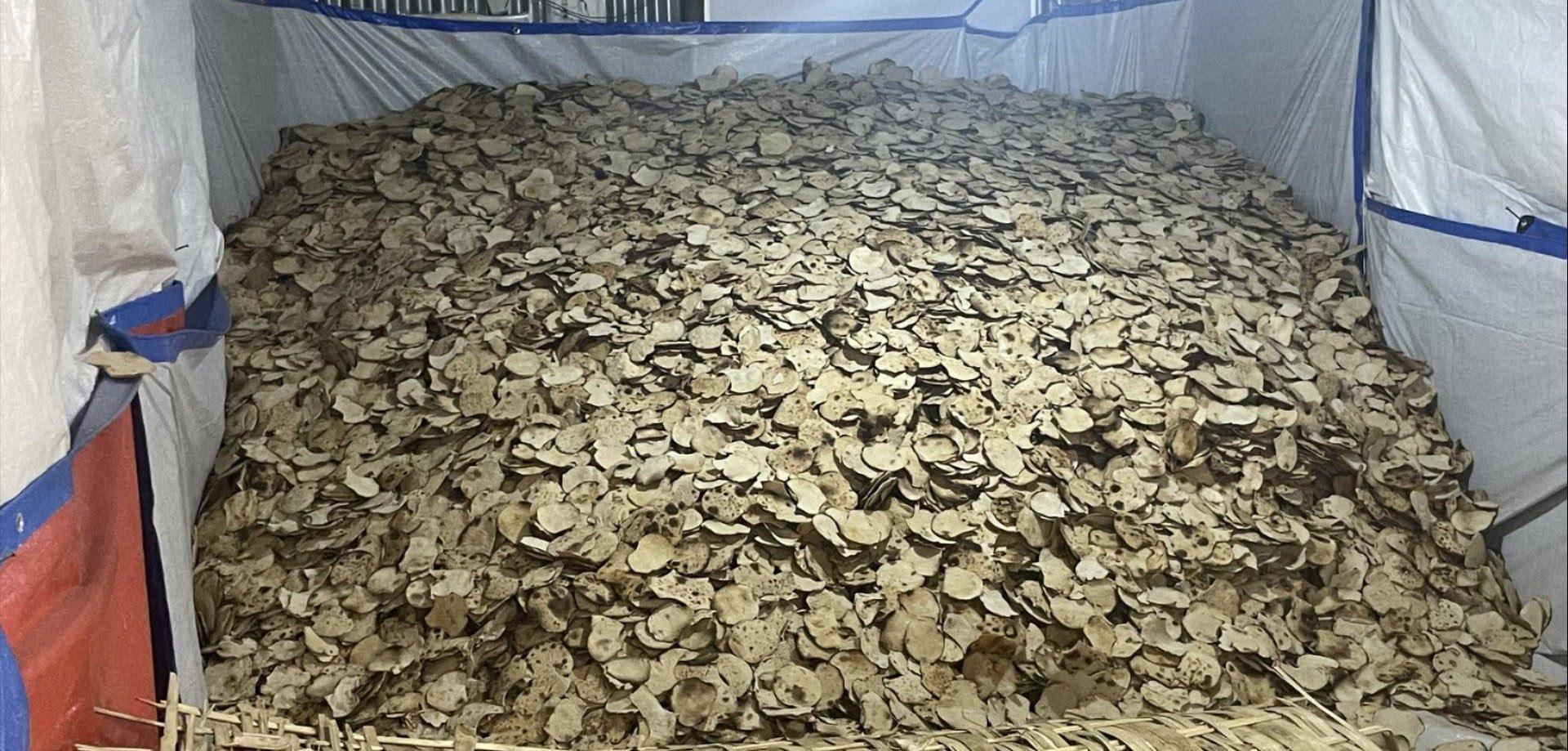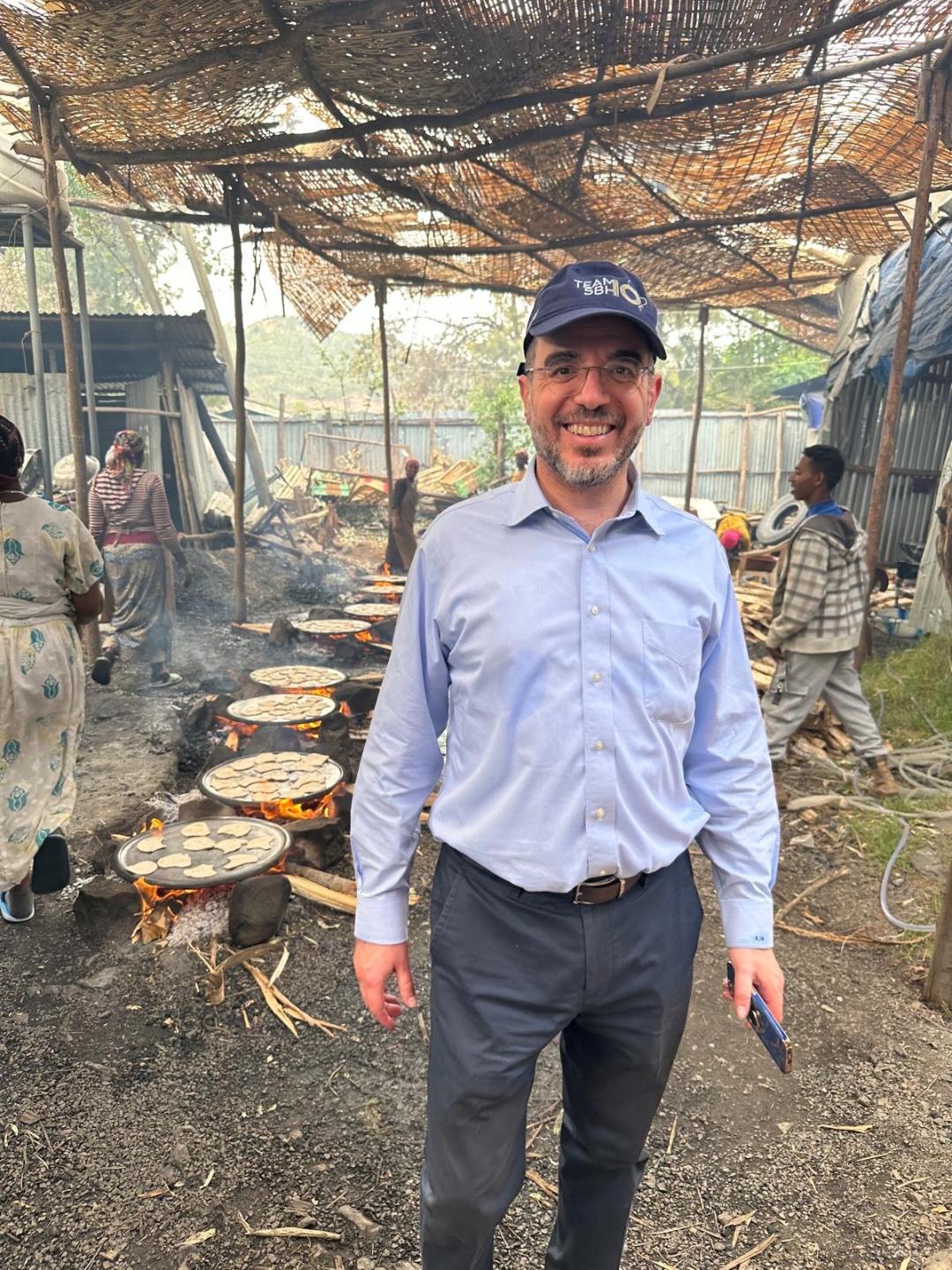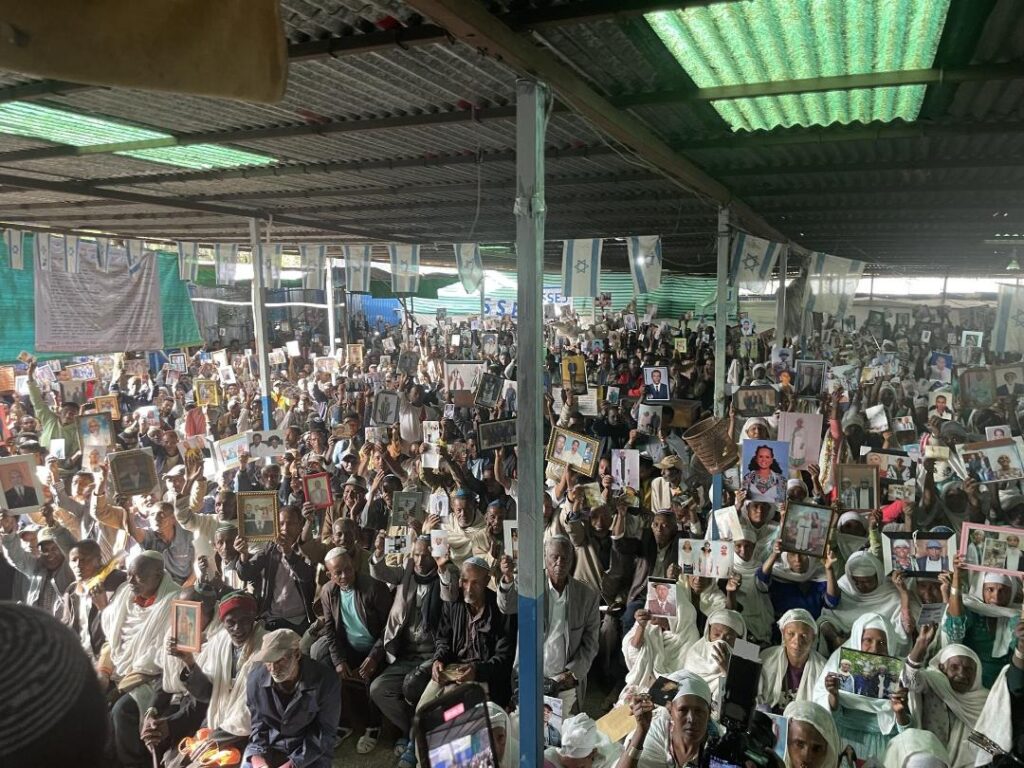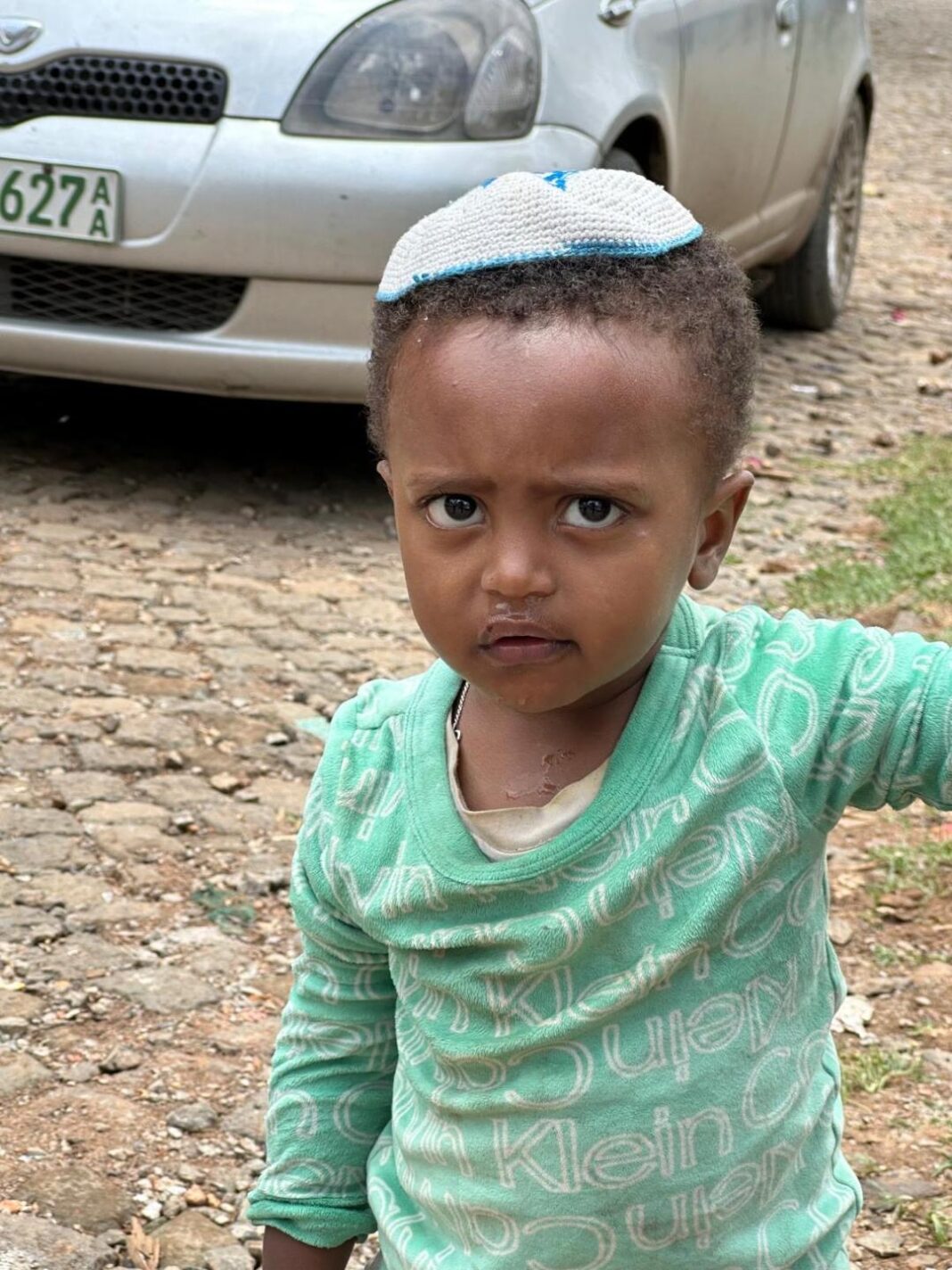|
Getting your Trinity Audio player ready...
|
By: Rabbi Leonard Matanky
You probably didn’t know this, but early Monday morning, I left Chicago to travel to Ethiopia, as part of a small rabbinic delegation organized by the Struggle to Save Ethiopian Jewry. Our goal was to meet the members of the Jewish community in the cities of Gondar and Addis Ababa, to learn of their struggles and provide “chizuk.”
I arrived in Addis Ababa on Tuesday morning (it’s a 14-hour flight with an eight-hour time difference), and we flew in a small propeller plane to Gondar. Gondar is a city of about 500,000 people, including about 12,500 Jews of Beta Israel. The city is impoverished, and the Jewish community is even poorer, with families of eight or none people living in a single mud-walled room without indoor plumbing. The average annual family income in the community is about $600! If it were not for SSEJ, which provides food, medical, and religious services for the community, it’s hard to imagine how they could survive.

But they do more than survive because, in some respects, they are thriving as a community. In the afternoon, we davened mincha with them, and we were shocked to see more than 1000 people present for the minyan conducted in Amharic and Hebrew. It was very different and very inspirational. It reminded me not only how lucky we are but also how we take so many things for granted—be it the power of tefillah to build community or the many comforts we have. (Below is a view of their Beit Knesset in Gondar.)
From there we traveled to see their matzah factory in action – to feed everyone they will need 120,000 matzot – and 70,000 are already finished. We saw schools in action, children speaking Hebrew, learning מה נשתנה and so much more. (Below is a micture of the matzot!)
There is so much more I could write about, and I’ll share more on Shabbat in shul, but what I took away from that first day in Ethiopia is the fact that SSEJ, which single-handedly supports the Ethiopian community, is the project of one family – the Feits (from New York and Atlanta). Started by their patriarch, Joseph Feit, they are responsible for the aliyah of nearly 60,000 members of the Beta Israel community (more than three times the aliyah of Operation Moses and Operation Solomon). As former Chicagoan, Rabbi Jon Kroll commented to me (he’s also on the trip), “It’s amazing what one family can accomplish in this world.” And after speaking with Mr. Feit and joining his three adult children on this mission, I believe their secret is dedication to a greater goal, devotion to helping people, and a deep faith in HaKadosh Baruch Hu!
Wednesday, was another emotional and deeply meaningful day in Ethiopia. We began the morning back at the SSEJ Compound in Gondar with Shacharit. Yesterday’s Mincha with over 1,000 people was inspiring—but this morning’s tefillah was overwhelming. More than 4,000 Jews filled every corner of the compound, with hundreds more standing outside, unable to get in.

It was a breathtaking gathering, as so many came to see the visitors—our delegation—from the United States and Israel. Every moment was charged with emotion. The men were wrapped in tallitot handwoven on looms in Gondar. The silence during tefillah was powerful. And when we concluded with Hatikvah, the entire space echoed with hope.
After davening, we ascended the bima, and each member of the delegation had a chance to speak. I shared thoughts on the final words of this Shabbat’s Birkat HaChodesh, in which we pray for G-d to gather our people from the four corners of the earth—concluding with the declaration, “Chaveirim kol Yisrael”—that we are all friends, all one people, no matter where we come from.
As we spoke, members of the community held up pictures of their relatives who have already made aliyah—many of whom serve in Tzahal. One by one, they passed these photos up to us on the bima—each picture was a silent plea to help reunite their families in Israel
Unfortunately, the newly passed Israeli budget includes no funds to bring the remaining members of the Beta Israel community to Israel. Jeremy Feit, president of SSEJ, had the painful task of telling them that while we will continue to advocate for them, their prayers may remain unanswered for now. Even more heartbreaking, he had to inform them—through tears—that donations from world Jewry have declined, forcing cuts to essential services. Children over the age of three who are malnourished may no longer receive food support, and access to basic medical care and food for families will have to be reduced.
It was painful to hear, and the disappointment on their faces was unmistakable. Yet, their spirits remained high. Their greetings were warm, their smiles genuine, and their hugs heartfelt.

Tonight, we returned to Addis Ababa and met with the Israel’s ambassador to Ethiopia, Avraham Negusie. I had met him once before when he visited Chicago a couple of years ago and was my guest at ICJA. He was born in Ethiopia and he very diplomatically addressed our concerns about why Israel is not doing more for the remaining members of Beta Israel. But it was clear that more needs to be done, and Diaspora Jewry needs to be part of the solution.
Tomorrow night, I will be on my way home for Shabbat. There is still so much more to share, but two things are already clear.
First, we can make a real difference with even small efforts. Just $500 can feed a child in Gondar for an entire year. The same amount can provide a pair of tefillin for a community of more than 12,000 Jews, who currently share fewer than 50 pairs.
Second, the Jewish People are extraordinary. We have endured so much, and yet we hold tight to our beliefs, our dreams, and our unity. Visiting this impoverished, African community of Black Jews might highlight our differences—but what stands out even more is how much we share: the tefillot we recite, the Torah we study, the love of Israel we carry, the hope we refuse to abandon, and the unshakable bond of Am Yisrael.
I look forward to sharing more thoughts this Shabbat.
B’vracha from Ethiopia,
Rabbi Leonard A. Matanky
Congregation K.I.N.S. of West Rogers Park




